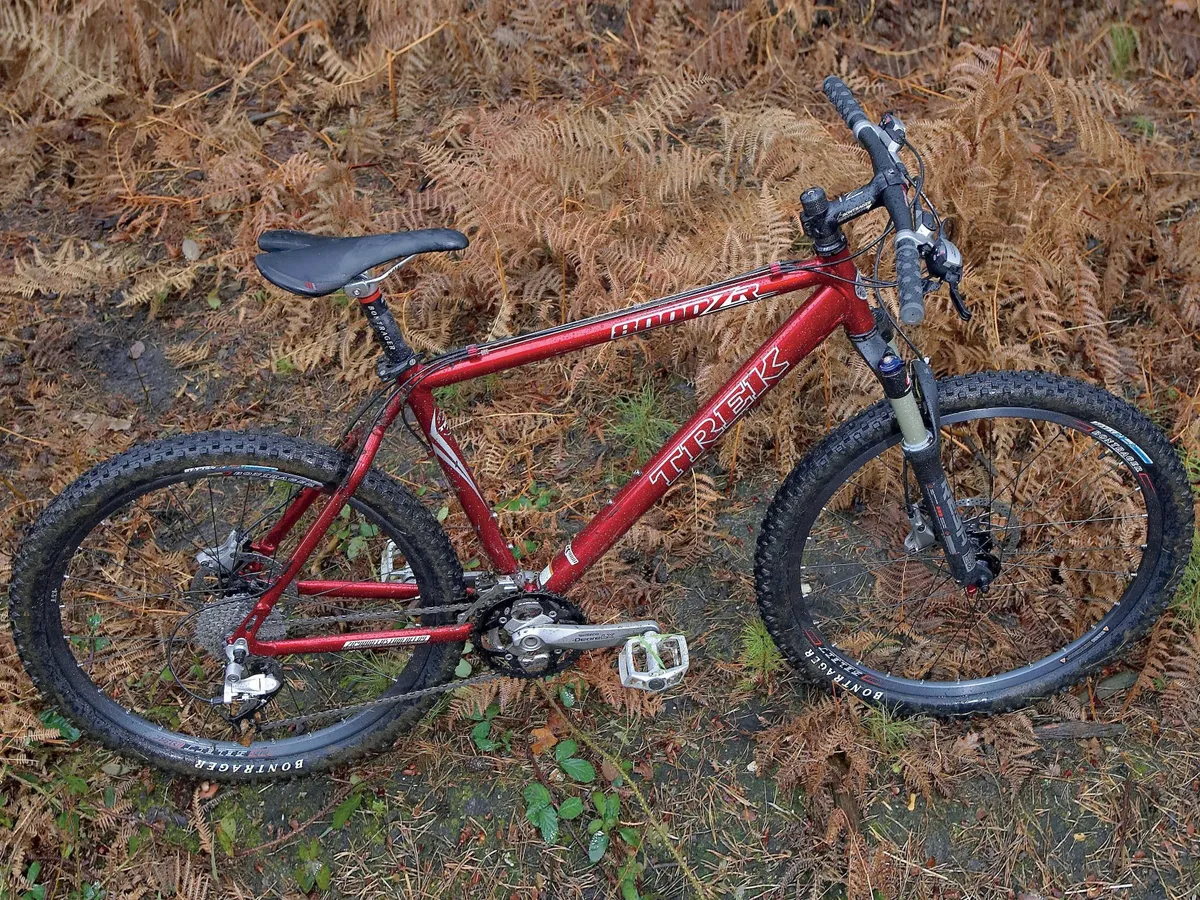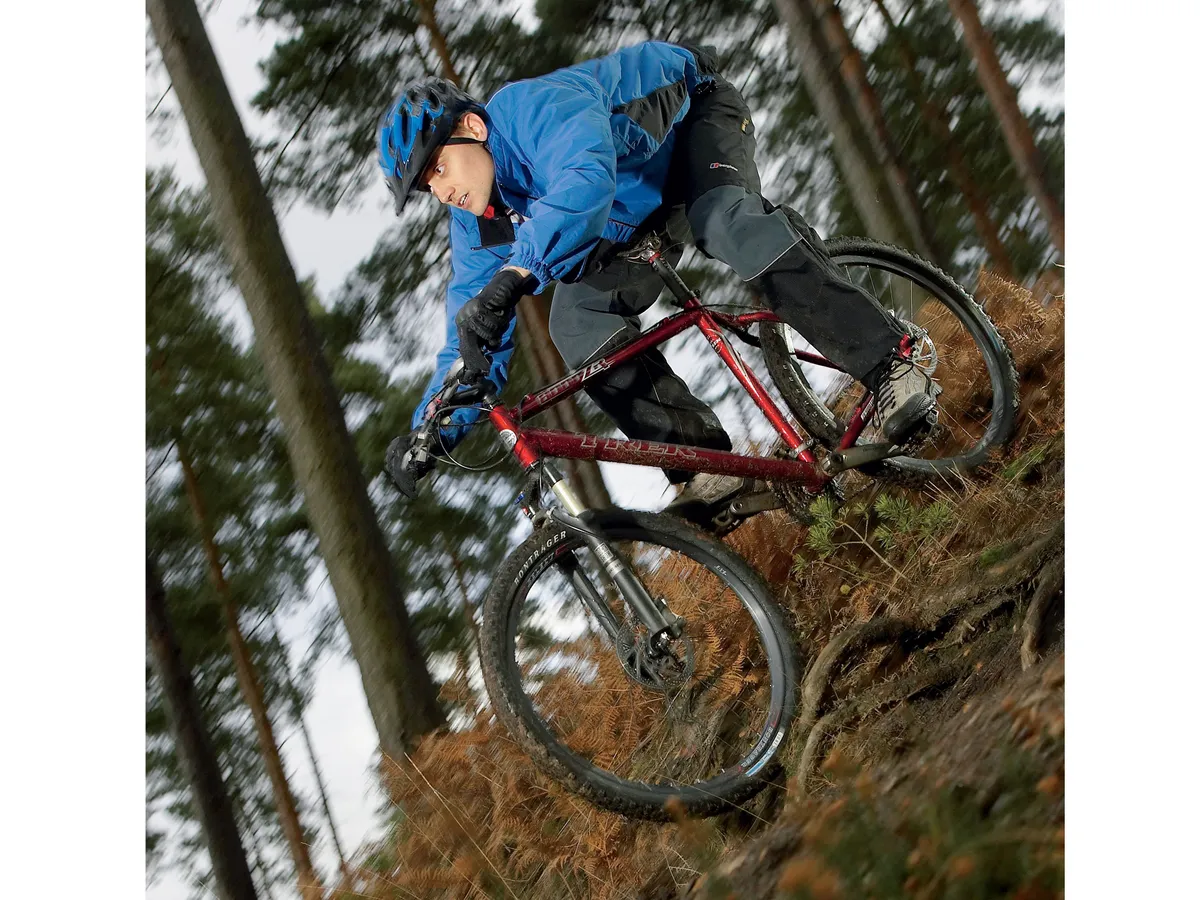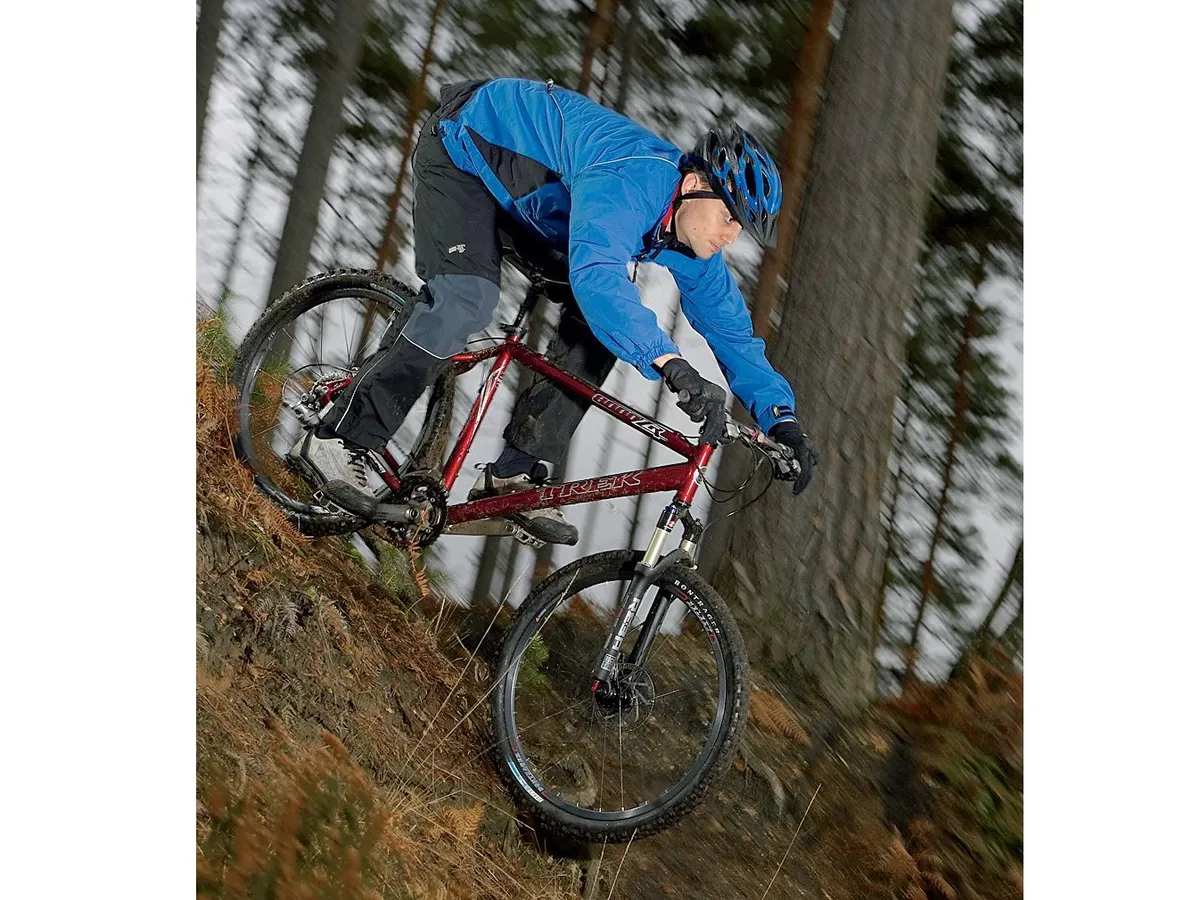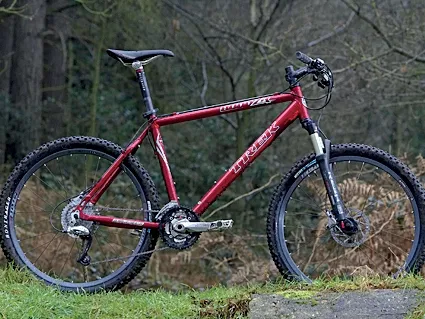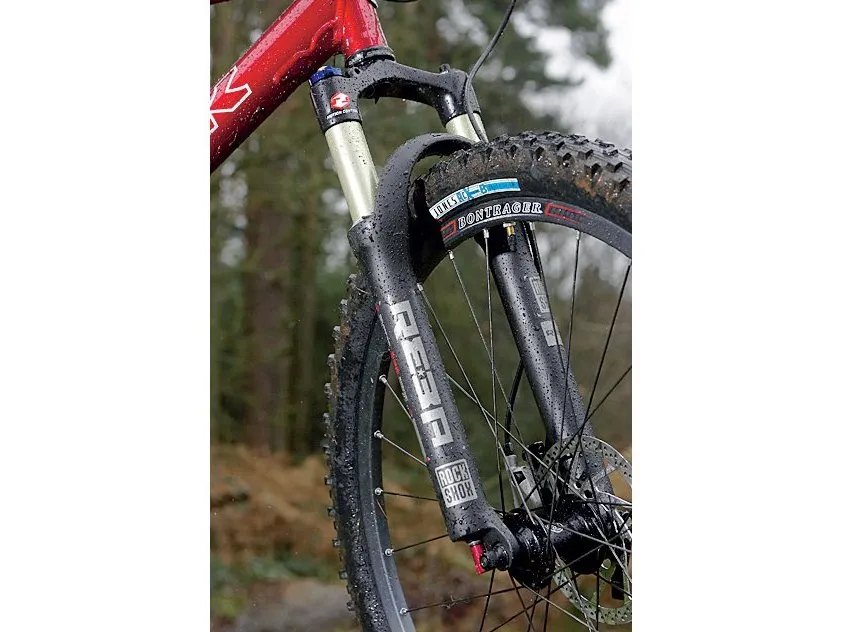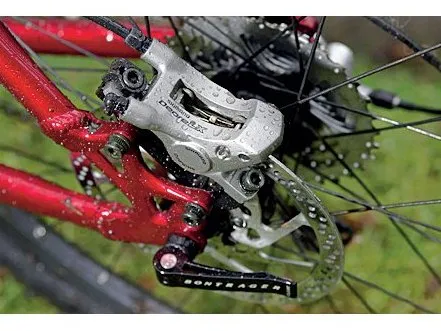Trek make two ZR9000 aluminium framed hardtails that cost more than this: the 8500 at £1,400 and the 8900 at £2,000. They use the same frame as the 8000 and, as complete bikes, are only slightly lighter. For significant further weight saving you'd need to look at the 9.8, an OCLV carbon-framed offering at £2,400. The carbon frame alone costs the same as this bike. In other words, if you're after a light and lively Trek XC bike, the 'Rage Red' 8000 looks like the obvious 'sensible budget' choice.
The chassis
Like so many other brands, Trek haven't been shouting about their aluminium hardtails for a while now. But while the marketing effort has been going into the full sussers, the top end hardtails have been quietly reaping the rewards from a new generation of suspension forks and components.
Trek's ZR9000 custom-butted alloy tubes build into a strong, light and seriously decent frame, certainly worthy of a bike at this price. The down tube is bi-axially ovalised for maximum lateral stiffness and weld strength at the head tube and bottom bracket, a nicely executed gusset behind the reinforced head tube adds extra impact resistance, and the top tube is slightly sloped for generous standover room. There's loads of tyre room between the chainstays and wishbone seatstays, the cable and hose routing is tidy and the clean look is emphasised by a lack of cantilever brake bosses on the frame or the fork.
The RockShox Reba SL 80mm (3in) travel air fork has a compression lockout leg-top dial but comes without the Motion Control thumbshifter. It's still easy enough to flick the lockout lever as you're riding, though. The rebound damping is effective and the ride is great from the off.
The detail
The 8000's drivetrain features a superstiff Shimano Deore LX hollow-axled crankset with outboard bearings, an XT rear mech and LX front mech, Dual Control shifters (you shift gear by flicking the brake lever up or down) and hydraulic disc brakes. Dual Control shifters are becoming more popular, but it does take a few rides to adapt. The only problem we had with the gears was occasional chain slippage under power on the middle ring of the LX cranks; we've experienced this before and we still can't work out what causes it, but it only seems to happen on Shimano's steel middle rings when they're new.
The Bontrager Select wheelset is strong and reasonably light by disc wheel standards. The Bontrager Jones 2.2in treads are fairly light too; they're very grippy in most conditions and they have big air volume that adds a lot of comfort and confidence to the ride. The minimalist Bonty Race saddle is far more comfy than it looks but the seatpost kept slipping down in the frame, even with the quick-release clamp done up so tight that the bolt started to bend. This isn't the first time we've had this problem with Trek frames; it seems the seat tube is slightly oversized rather than the post being undersized.
The 600mm (23.5in) Bontrager flat bar has a pleasing back-sweep and there's a stack of steerer washers for height adjustments. The stem and the skinny but comfy grips are ideal for a race-ready bike, and clipless Shimano pedals are included.
The ride
Superficially, there may not appear to be much that separates the Trek from other conventional XC hardtails. The education starts if you ride an 11kg (24lb) hardtail like this directly after one that costs just over half as much and weighs over 1kg (2.2lb) more. You start to notice a few things.
The speed advantage is only slight and is most noticeable while climbing and accelerating, but there's a lot of other stuff going on here that makes the 8000 earn its price tag. For a start, the fork is far better controlled under pressure than other bikes in this market segment. This, combined with the sprightly ride that light bikes typically produce, adds considerably to your confidence when riding hard and fast through bumpy terrain. The big, grippy Bontrager treads help here too. Many XC speed demons still think skinny treads are the way to go, but big-volume treads that roll fast and grip well are a much better short cut to confident speed.
The long top tube of the Trek creates a speed-efficient riding position, and a fairly steep seat angle sits you far enough forward to get the best out of a very good fork. This, combined with incredibly stable handling, results in a bike that simply feels planted in all situations. The confidence that this produces conspires with the bike's low 11kg weight to make you realise it's worth the money.
